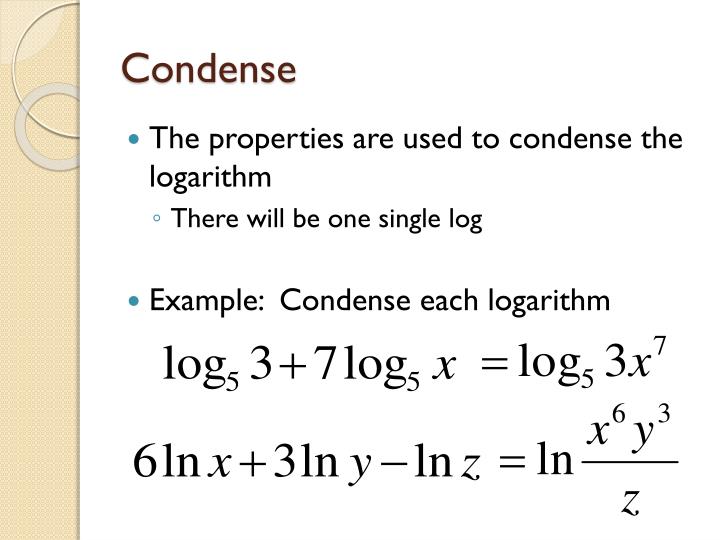

Zip files can be decompressed on Windows systems, Linux, and other Unix systems by using the zip command. When using the xz command, it appears to take significantly longer to encrypt files than when using other commands.ĭecompression times will be significantly shorter than compression times. The file you want to compress is compressed using the gzip command, which is as simple as following the name of the file you want to compress.

The gzip command has a simple procedure that can be used. In this post, we will compare compression commands and highlight the differences. Each of these programs has the advantage of saving disk space while also preserving files for later use.
Condense log software#
Xz is one of the most advanced and effective software programs. There are a number of files compression commands available for Linux. This will compress the file and create a new file with a. In order to compress a file in Linux, you can use the gzip command. How Do I Compress A File In Linux? Credit: How-To Geek Tar (short for tape archiving) is a command used in Unix and Unix-like operating systems (such as Linux) to organize and/or store multiple files in a single file. If you are able to group your files by extension, you can also use a wildcard.
Condense log zip file#
You can simply append all of your file extensions to a zip file in order to zip multiple files using the zip command. The following command compresses the directory name, creates a new zip file named, and renames it. If you have a WordPress site named, you should compress all of the files and folders within it before downloading it. The file-caching command ‘zip’ can be used to compress a large file collection.
Condense log how to#
Gzip can be executed without any prior knowledge of how to do so. Hold your finger (or click with a right mouse button) to select a compressed (zipped) folder in a file or folder.

If you compress a file, you will not lose any original files if they cannot be modified very effectively. Compressed files (decompressment) can be compressed using a variety of methods, including grub (gzip) and unzipping. You can compress large amounts of data by utilizing the gzip, bzip2, and zip commands. Linux and UNIX can be used to compress or jamsack compressed files (read as expand them). Alternatively, the compressed log files can be deleted if they are no longer needed. Once the log files have been compressed, they can be moved to a different location on the filesystem, such as a backup directory. For example, if the original log file is named system.log, the compressed file will be named 2. bzip2 will compress the file and create a new file with the extension. Where is the name of the log file to be compressed. To use bzip2, type the following command at the command line: bzip2 is similar to gzip, but it typically provides better compression ratios. For example, if the original log file is named system.log, the compressed file will be named .Īnother way to compress log files is to use the bzip2 utility. gzip will compress the file and create a new file with the extension. To use gzip, simply type the following command at the command line:

gzip is a powerful compression tool that can greatly reduce the size of log files. The most common is to use the gzip utility, which is included with most Linux distributions. There are a few different ways to compress log files in Linux. In such cases, it may be necessary to compress the log files in order to save space. In some cases, log files can become quite large and take up a lot of space on the system. Log files are an important part of any Linux system as they contain a wealth of information about the system, its activity, and any potential issues.


 0 kommentar(er)
0 kommentar(er)
